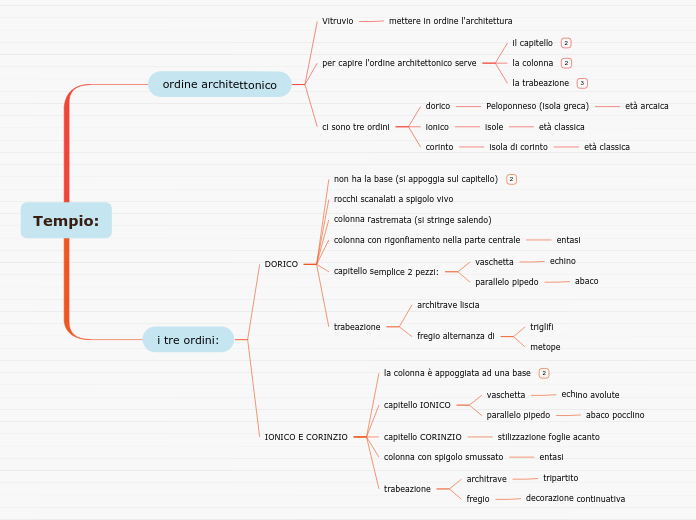by Nancy Castagna 4 years ago
255
Tempio:
L'architettura classica greca si distingue principalmente per tre ordini: dorico, ionico e corinzio. Ciascun ordine si caratterizza per specifici elementi strutturali e decorativi. L'

by Nancy Castagna 4 years ago
255

More like this

To name your story, you have to think about the overall message and what you want your audience to understand from the story. Also, make it relevant and easy to remember.
The middle of the story is where you add layers of complications that will lead to the end. Reveal more about the character's journey. Did their personality go through changes? How did they overcome the challenges? And as you build up the story’s central conflict, make it more personal to that character. Also, from the middle act, you have to lead into the final act.
Your character(s) need(s) motivation in order to solve the challenge(s).
fregio
decorazione continuativa
architrave
tripartito
Secondary characters might also have motives that lead them to cross paths with the main character or which might trigger them to help the main character.
stilizzazione foglie acanto
Secondary characters also might have motivs beacuse of which they may cross path with main character or which might trigger them to help the main character.
abaco pocclino
echino avolute
Why does your character need to confront this challenge? What does he/she expect to accomplish by solving it?
See a few examples:
Motivation
Each story has a main character and that character usually needs to solve a problem or challenge. The character's challenge is the one that creates tension throughout the story.
fregio alternanza di
metope
triglifi
architrave liscia
Type in any other challenges which other characters in the story need to face.
parallelo pipedo
abaco
vaschetta
echino
entasi
In most stories, there are 3 challenges. The number 3 is a mystical number symbolizing completeness. Try to come up with interesting challenges with which your character needs to struggle.
See a few examples below:
Challenges
In the beginning of the story (or the exposition), you will need to introduce the setting and characters. You might also want to introduce the main conflict. This part of the story is important because it gives the reader necessary background information and maybe even a first insight into a character’s personality.
isola di corinto
isole
età classica
Peloponneso (isola greca)
età arcaica
The setting (time & place) of a story can change throughout the plot.
The weather is an important element in your story because it can highly influence the ambiance and the mood of the characters.
Do these weather conditions affect the main character?
The most affected character is the main character. Write down here if he/she is affected by these weather conditions in any way. For example, if they lost a family member or their home during a hurricane, etc.
Elements of nature
Decide if you want to include an element of nature in your story. For example, a rainbow can be a very nice choice for a happy ending. The mist in a story can represent mystery and secrets. A thunder can appear in the background at the moment when the 'bad guy' of the story makes its appearance, etc.
Catastrophic event
Does your story include catastrophic weather? See a few suggestions below or add your own:
- hurricane, earthquake, storm, etc
The time of the story can also change. It can describe the event of a single day or can include an entire year's plot. Anyway, don't forget to mention it.
Time of plot
Your story can take place wherever your imagination will take you to.
For example: in an elevator, in an enchanted forest, etc. Don't forget to give details of the environment each time the setting changes, otherwise, the story can be confusing. Also, mention the seasons as each of them has unique weather and events.
Location
Characters are essential to a good story. Usually, the protagonist(s) is/are the most affected by the plot. Introduce a character by focusing on their actions, interests, and occupation, as the physical appearance doesn't make a difference in most cases.
Type in the name of your character.